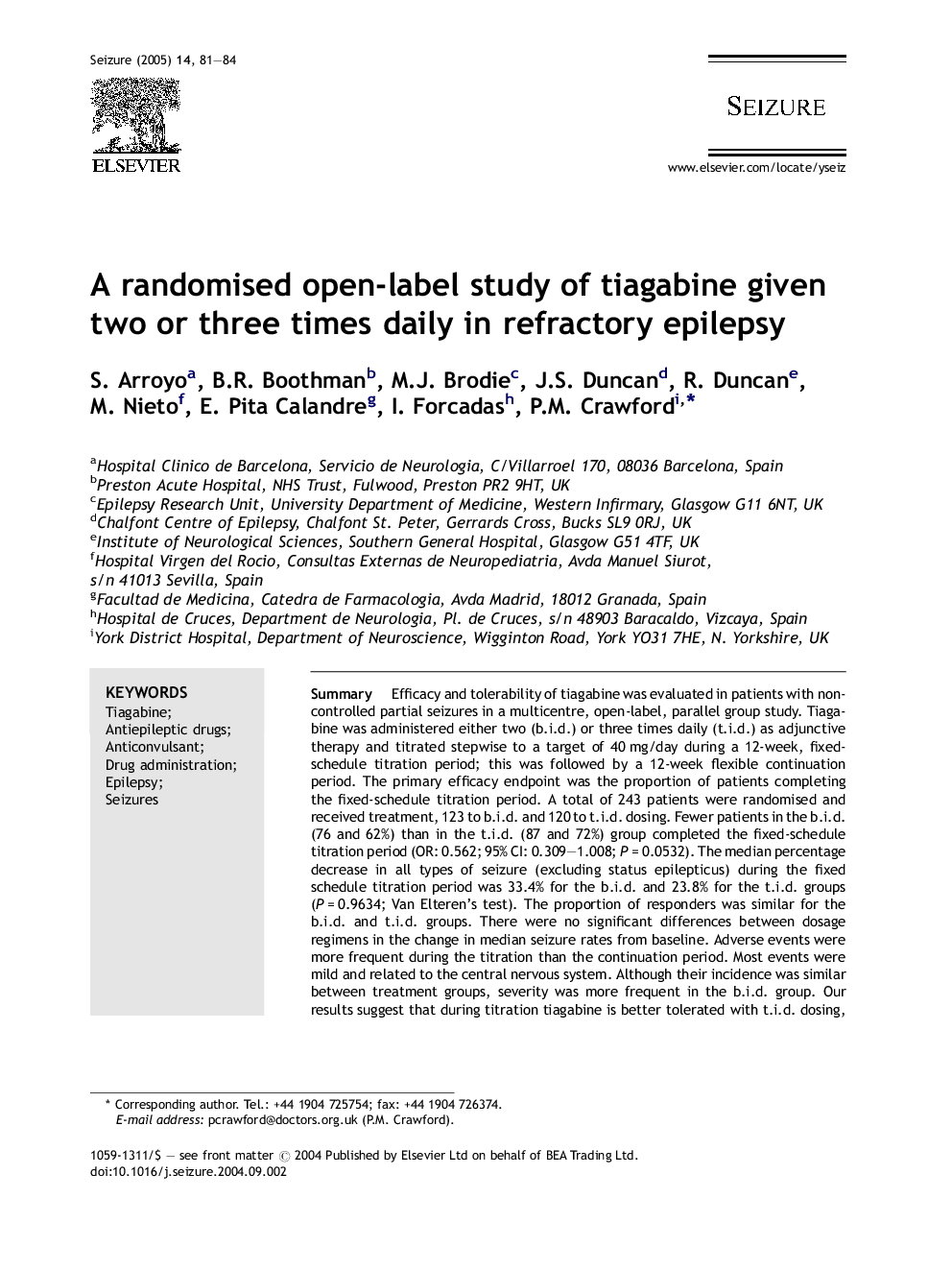| Article ID | Journal | Published Year | Pages | File Type |
|---|---|---|---|---|
| 10308617 | Seizure | 2005 | 4 Pages |
Abstract
Efficacy and tolerability of tiagabine was evaluated in patients with non-controlled partial seizures in a multicentre, open-label, parallel group study. Tiagabine was administered either two (b.i.d.) or three times daily (t.i.d.) as adjunctive therapy and titrated stepwise to a target of 40Â mg/day during a 12-week, fixed-schedule titration period; this was followed by a 12-week flexible continuation period. The primary efficacy endpoint was the proportion of patients completing the fixed-schedule titration period. A total of 243 patients were randomised and received treatment, 123 to b.i.d. and 120 to t.i.d. dosing. Fewer patients in the b.i.d. (76 and 62%) than in the t.i.d. (87 and 72%) group completed the fixed-schedule titration period (OR: 0.562; 95% CI: 0.309-1.008; PÂ =Â 0.0532). The median percentage decrease in all types of seizure (excluding status epilepticus) during the fixed schedule titration period was 33.4% for the b.i.d. and 23.8% for the t.i.d. groups (PÂ =Â 0.9634; Van Elteren's test). The proportion of responders was similar for the b.i.d. and t.i.d. groups. There were no significant differences between dosage regimens in the change in median seizure rates from baseline. Adverse events were more frequent during the titration than the continuation period. Most events were mild and related to the central nervous system. Although their incidence was similar between treatment groups, severity was more frequent in the b.i.d. group. Our results suggest that during titration tiagabine is better tolerated with t.i.d. dosing, but during long-term maintenance, a t.i.d. schedule is as effective and well tolerated as b.i.d.
Related Topics
Life Sciences
Neuroscience
Behavioral Neuroscience
Authors
S. Arroyo, B.R. Boothman, M.J. Brodie, J.S. Duncan, R. Duncan, M. Nieto, E. Pita Calandre, I. Forcadas, P.M. Crawford,
